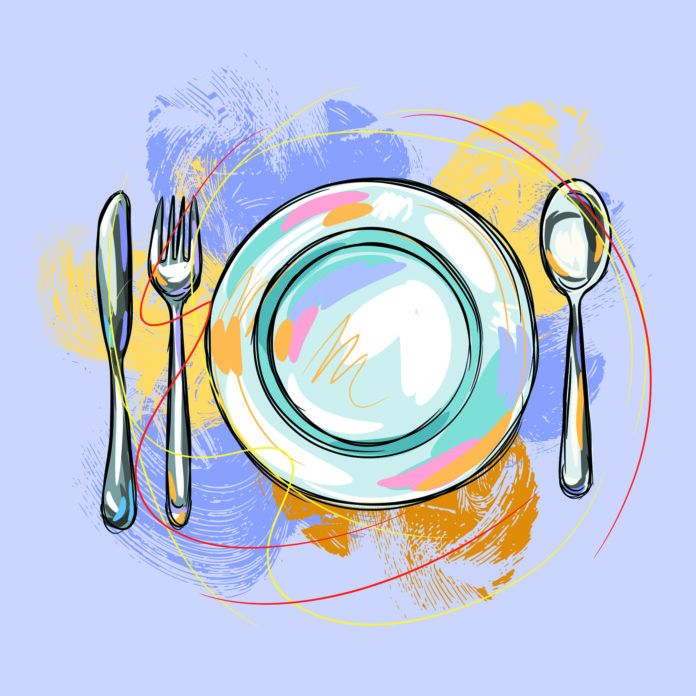One guest at your holiday table is a strict vegan; another touts the merits of “clean eating;” a third talks incessantly about how good they feel following a keto diet. Are these friends and family members taking steps toward better health, or are they on the road to an eating disorder?
National surveys estimate 20 million women and 10 million men in the U.S. will have an eating disorder at some point in their lives. These serious illnesses can affect people of any gender, age, race, body shape, and weight. Knowing what to look for could help a loved one get the treatment they need for a potentially life-threatening problem.
Eating Disorders. You may have heard of anorexia (characterized by extreme food and calorie restriction, distorted body image, and low body weight), bulimia (a cycle of binge eating followed by purging), and binge eating disorder (recurrent episodes of uncontrolled, excessive eating followed by guilt and shame). There are also a number of other conditions classified as eating disorders. “Eating disorders are not a fad or phase,” says Chelsea Kronengold, a spokesperson for the National Eating Disorders Association, “and they are not a choice.”
No one knows for sure what causes eating disorders (a range of biological, psychological, and sociocultural factors are thought to play a role), but we know these conditions can affect every organ system in the body. Eating disorders can cause heart disease, muscle loss, osteoporosis, and serious gastrointestinal disorders, as well as psychological and emotional consequences like shame, guilt, and damage to self-image and self-esteem.
“Although people with eating disorders can lose (or gain) drastic amounts of weight in a short period of time, eating disorders are not actually about weight,” Kronengold says, “and people of any weight can be struggling with these devastating illnesses.”
Disordered Eating. Becoming so concerned with the healthfulness of foods that one risks damage to their own well-being is called orthorexia. While not a formal eating disorder, orthorexia is a type of disordered eating. “Disordered eating can be the precursor to an eating disorder,” cautions Kronengold. Dieting for weight loss is one clear risk factor for future development of an eating disorder. “Since fad diets and intense workout plans are commonly promoted in this societal diet culture, disordered eating can be difficult to identify,” says Kronengold, “but early identification and intervention is essential to preventing a full-blown eating disorder.”
What to Look For. “Signs and symptoms will vary from person to person,” says Kronengold. Additionally, there are grey areas. For example, while many people choose to follow a vegan diet (eating no animal products) for religious, environmental, or animal rights reasons, some people may mask an eating disorder by claiming they are vegan. While it is unlikely you will be able to determine if someone has an eating disorder simply by observing their behavior and eating habits a few times, you may see something that causes you to look for other behaviors that could establish a reason for concern.
In general, people with eating disorders will demonstrate a strong preoccupation or obsession with food, weight loss, body shape, dieting, and/or exercise. They may show signs of significant, rapid weight loss or gain; withdraw from social situations (especially those that include food); and make excuses for why they are not eating. People with binge/purge disorders may regularly get up to go to the bathroom in the middle of a meal. You may notice negative self-image and self-esteem, unexplained shame, guilt, and distress, and a loss of interest in hobbies and previous interests.

Image © xyom | Getty Images
What to Do. As tempting as it may be to comment on a guest’s weight loss, tease someone’s eating habits across the table, or publicly encourage a picky eater, don’t. “Confrontational methods will backfire because they put the person on the defensive,” says Kronengold. “The first recommended step is to express your concerns—in private—with honesty and respect in a caring, supportive, uncritical way. It’s important to let them know you believe in them and want to see them happy and healthy.” Use “I” statements, such as, “I am concerned about you because I noticed you didn’t eat any carbs,” or “I noticed you’ve been skipping meals.” Be specific, and avoid accusatory “you” statements, such as “you are too thin,” or “I know you ate that leftover pie I had in the fridge overnight.”
If you know or suspect someone may be struggling with an eating disorder, focus on the non-food related aspects of holiday observances, such as the meaning behind the day or the joy of being together. You may want to ask other guests to avoid making food- or weight-related comments at the table. “It can be helpful if people don’t make grand announcements about how stuffed they are or how they know they shouldn’t be taking this second helping,” says Kronengold. “In our diet culture, comments like these seem normal and harmless. We don’t realize how they perpetuate unhealthy views of food and body image.”
It is important that people with eating disorders seek professional help. There are differing approaches to treatment and no one-size-fits-all approach. While eating disorders can be difficult to recognize and even more difficult to talk about, it is important to discuss your concerns as early as possible. “Don’t bring up your concerns during the holiday meal,” says Kronengold, “but, please, don’t wait too long.”
Try these tips for if you think someone you know may have an eating disorder:
- Have the facts. Eating disorders are dangerous, potentially life-threatening, and not a choice.
- Beware of disordered eating. Adherence to diets or eating plans that damage one’s own well-being is a type of disordered eating that can lead to a more serious eating disorder.
- Look for red flags. It’s impossible to diagnose an eating disorder by observing eating behavior at the holiday table or any one meal. Try to ascertain if the person shows other signs, such as obsessing over food, weight, and/or exercise or withdrawing from social situations.
- Choose your moment. Bring up your concerns in a quiet, private space.
- Be supportive. Let them know you care about them and want them to be happy and healthy. Avoid criticism, blame, and shaming. Encourage them to seek professional help.
- Watch your language. Our daily conversations are full of comments that, directly or indirectly, focus on weight, body type, and shame around eating. Pay attention to the way you talk about (and think about) food.




















